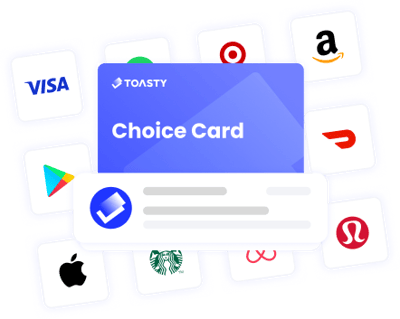Why Digital Incentives Matter for Today’s Workforce
In today’s fast-paced workplace, recognizing and rewarding employees goes far beyond annual bonuses or the occasional team lunch. Staff want to feel appreciated consistently, and organizations that prioritize recognition often see stronger engagement and performance.
That’s where digital incentive programs for staff come into play. By shifting away from outdated, manual reward systems, HR leaders can create scalable, flexible, and impactful recognition strategies that resonate with a diverse workforce.
What Are Digital Incentive Programs for Employees?
Defining Incentive Programs in a Modern Context
Digital incentive programs use online platforms to deliver rewards such as gift cards, wellness credits, or experience-based perks. Instead of handling physical vouchers or paperwork, everything is automated and streamlined.
How They Differ from Traditional Reward Systems
Unlike traditional programs that rely on cash bonuses or one-size-fits-all gifts, digital systems offer:
- Real-time distribution of rewards.
- Flexible options for employees to choose what they want.
- Data tracking to measure engagement and ROI.
Benefits of Digital Incentive Programs
Increasing Employee Engagement
Employees who feel recognized are more engaged. Incentives tied to achievements—big or small—boost motivation and foster a sense of belonging.
Driving Higher Performance and Productivity
Digital incentives create clear performance goals and provide instant feedback in the form of rewards, which pushes employees to perform at their best.
Reducing HR Administrative Workload
Automation eliminates repetitive tasks like distributing vouchers, tracking usage, or processing reimbursements, saving HR valuable time.
7 Steps to Launch Digital Incentive Programs for Staff
Step 1: Define Clear Objectives and Goals
Before launching, determine whether you want to improve engagement, drive sales, or boost retention. A clear purpose shapes the right program structure.
Step 2: Identify Key Performance Metrics
Track measurable results such as project completion rates, attendance, or customer satisfaction scores to align incentives with performance.
Step 3: Select the Right Incentive Platform
Choose a platform that supports integrations with your HR and performance systems, offers bulk reward options, and provides choice-based incentives.
Step 4: Personalize Incentives for Maximum Engagement
Generic rewards fall flat. Instead, offer flexible gift card options so employees can pick what they truly value.
Step 5: Integrate Incentives into Daily Workflows
Rewards should feel seamless. For example, connect them with recognition tools, performance dashboards, or wellness apps.
Step 6: Track, Measure, and Optimize Performance
Use analytics to see which rewards drive the best outcomes, then refine your program accordingly.
Step 7: Communicate and Celebrate Success
Keep employees informed, celebrate milestones, and highlight achievements to reinforce the program’s impact.
Best Practices for Running Effective Incentive Programs
Aligning Rewards with Company Values
Ensure rewards reflect your organizational culture—whether that’s wellness, sustainability, or innovation.
Ensuring Fairness and Transparency
Clear rules and open communication prevent favoritism and build trust in the program.
Using Choice-Based Rewards (e.g., Gift Cards)
Offering a variety of options ensures that employees receive rewards they’ll actually use and appreciate.
Common Mistakes to Avoid in Digital Incentives
Overcomplicating the Program
Too many rules or complex structures discourage participation. Keep it simple and easy to understand.
Ignoring Employee Feedback
Regularly ask staff if the program is working for them. Engagement drops when feedback is overlooked.
Failing to Track ROI
Without measurement, it’s impossible to know if the program is achieving its goals. Always review performance data.
Real-World Examples of Digital Incentive Programs
Recognition for Remote and Hybrid Teams
Digital gift cards allow remote employees to feel just as recognized as those in-office, regardless of geography.
Performance-Based Rewards for Sales Teams
Sales staff thrive on recognition. Setting measurable targets and offering instant rewards drives performance.
Engagement Programs for Employee Wellness
Incentives tied to wellness challenges—like gym memberships or healthy meal credits—boost morale and support overall well-being.
Conclusion: Building a Culture of Recognition Through Digital Incentives
Launching digital incentive programs for staff isn’t just about handing out rewards—it’s about cultivating a culture of recognition, motivation, and high performance. By following the 7 steps outlined above, HR leaders and managers can streamline processes, boost engagement, and drive results that truly matter.
The future of employee recognition is digital. Start small, stay consistent, and watch how the right incentives transform your workplace.
FAQs
What types of incentives work best in digital programs?
Gift cards, wellness credits, and personalized experiences are the most popular and effective.
Do digital incentive programs only work for large companies?
No. They’re scalable, meaning both small businesses and enterprises can benefit.
How do these programs improve employee engagement?
They provide consistent recognition, which motivates staff and fosters stronger connections to the company.
Can performance really improve with digital incentives?
Yes. Linking rewards to measurable performance metrics drives accountability and results.
What’s the easiest way to get started?
Start small with a single program—like recognizing project completions—then expand as you see results.
Are digital incentives cost-effective?
Yes, because they reduce admin overhead and allow companies to control budgets more effectively


.png)
